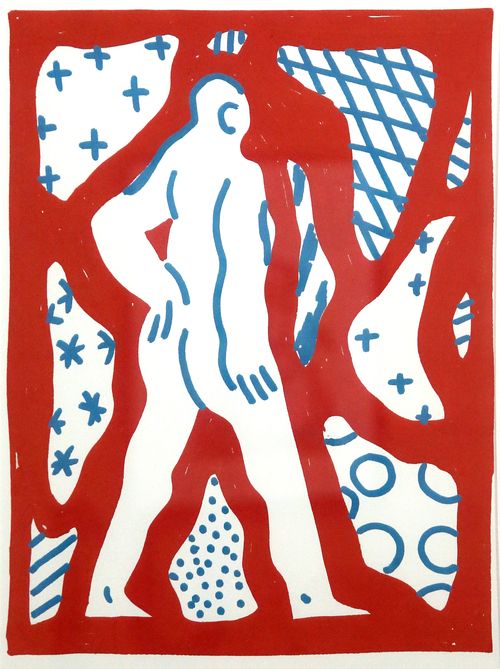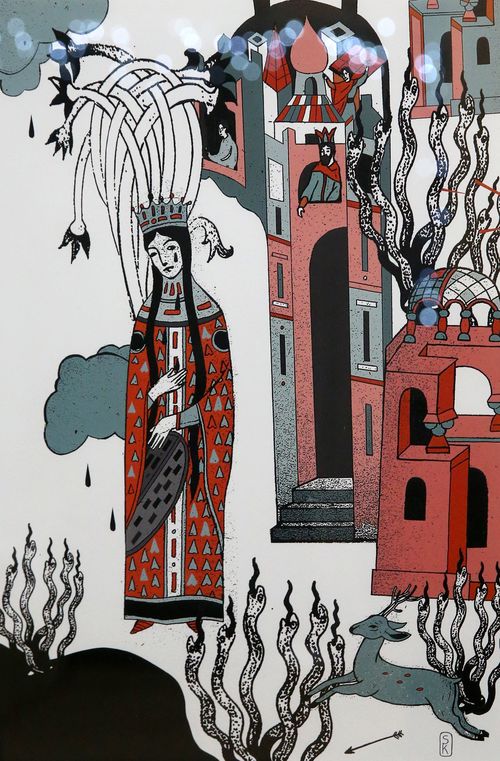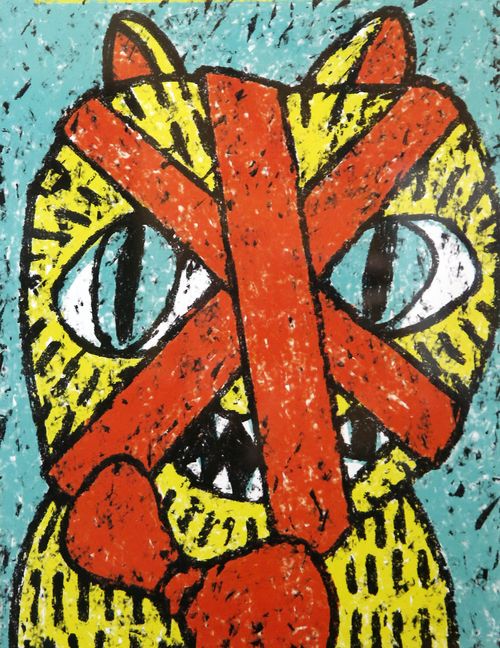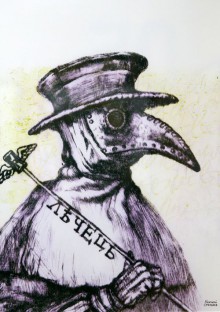“Graphics, particularly illustrations, cannot be squeezed within the framework of a traditional academic school, for it always follows technical innovations,” says Oleh Hryshchenko, co-curator of the Pictoric club of illustrators. A teacher at the National Academy of Fine Arts and Architecture (NAOMA), he organized an exhibit of its students who practice graphics. This project, “Twelve,” can now be seen at Kyiv’s Orthodox art space.
“Twelve new illustrators are like 12 months,” Oleh continues. “As I teach at the academy, I know a lot of young illustrators who are only learning, but whose mastery is on a high professional level. They can easily present their works at various exhibits.”
Each author has exhibited one work. They are very different in subjects, styles, and techniques, so one can immediately see diverse trends in Ukrainian illustration which has won a lot of compliments from connoisseurs and the public at large.

Olha Muzychenko’s winter landscape seems to have been painted in watercolors, but it was in fact done on a computer. Next to it is the famous “Kyiv Cakes,” an illustration by Olha Hordiienko – as if taken from a voguish city guidebook. Another work, “Healer” by Mykola Stepanov, shows a doctor who scares by his looks. This illustration was displayed two years ago in another group project on outdated Ukrainian words.

On a drawing by Sasha Averbakh, a naked man turned away from us and looks into a red space, in which white “islets” with blue patterns are scattered. They resemble broken dish pieces, as does the man himself who has propped up his back with the hand, as is it were a coffee pot handle. ”At first this work was conceived a sketch of a tapestry or a carpet, or of something more monumental. But, so far, it remains a sketch and is in principle a self-sufficient work, an illustration without a certain context,” Sasha says. “I have some more works like this, for example, with a couple that looks like Adam and Eve, but in a not so classical interpretation. They are in an indefinite space, with yellow elements in the background serving as flowers, stars, and just abstractions. I make these sketches, for it is intended to hold a textile exhibit in the future.”

In general, NAOMA students often take part in various exhibits. For example, “Successors,” another exhibit of young graphic artists who study at the academy, recently opened at the Nebo gallery. Sasha point out that, although students’ works are very diverse, they show some particular features of Ukrainian illustration. “In my view, quite noticeable are the things that derive from older phenomena. Many, who turn to this theme, are inspired by Ukrainian myths, fairytales, and culture as a whole. Besides, some things are in common with Ukrainian primitive art, Boichukism,” the artist explains. “I think this continuity is very good. This is creating the characteristic features of precisely Ukrainian illustration.”

Hryshchenko believes that one of the factors that allow young Ukrainian illustrators to rival mature artists is the internet. “Thanks to free access to information, young people can see what’s going on in the world, are free to see the portfolio of the best illustrators, and can know what The New York Times and The New Yorker print on their front pages,” Oleh comments. “As people with ambitions, young illustrators can see in what direction one must develop. And we, teachers, should guide them and teach to create the product that can be commercially viable and, at the same time, skillfully made, and be of high artistic quality. It shouldn’t be just a paid-for illustration.”
You can see what young illustrators are capable of at the Orthodox art space until February 18.







